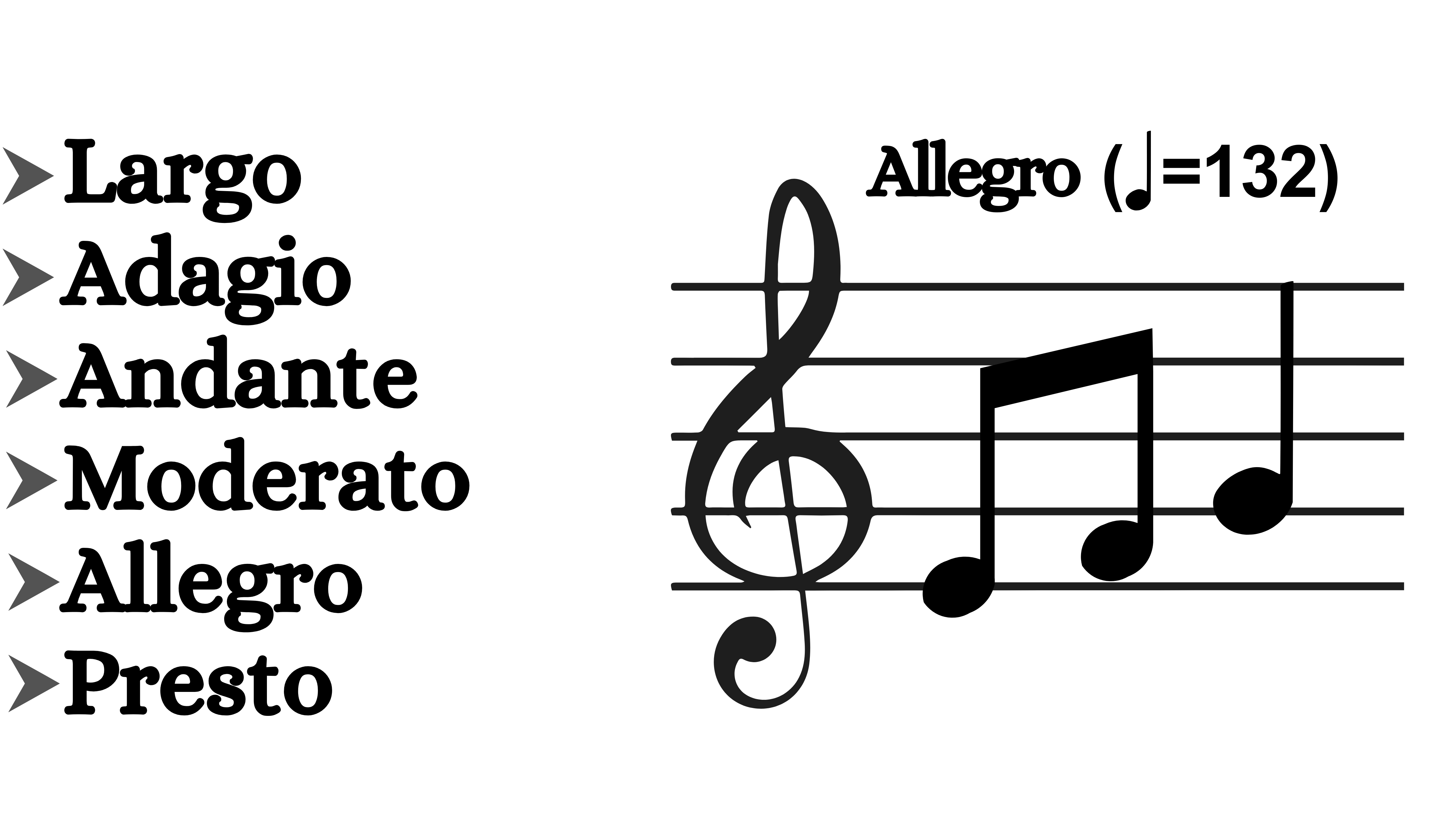
Tempo, often referred to as the pace or speed of a piece of music, is a fundamental element that significantly influences its overall character and feel. It is the rhythmic pulse that drives the music forward, setting the mood and energy level.
Understanding Tempo
Tempo is measured using a metronome, whose unit of measurement is beats per minute (BPM). A fast tempo, such as 120 BPM, means there are 120 beats in one minute. Conversely, a slow tempo, like 60 BPM, indicates 60 beats per minute. The choice of tempo can dramatically alter the perception of a piece, making it sound energetic, calm, or anything in between.
The Role of Tempo in Music
Tempo plays a crucial role in shaping the emotional impact of a piece. A fast tempo can create a sense of excitement, urgency, or even fear. A slow tempo, on the other hand, can evoke feelings of tranquility, sadness, or contemplation.
Tempo Markings
Composers often use Italian terms to indicate the desired tempo of a piece. Some common tempo markings from slowest to fastest:
These terms provide a general guideline, but the exact tempo can vary depending on the context and the composer’s intention.
Changing Tempo
Tempo is not always constant throughout a piece. Composers often use tempo changes to create interest, tension, or contrast. A sudden increase in tempo can create excitement, while a gradual decrease can evoke a sense of resolution or closure.
The Significance of Tempo
Tempo is a fundamental aspect of music that has a profound impact on its emotional impact and overall character. By understanding the role of tempo and the various techniques used to manipulate it, musicians can gain greater control over their performances and create more expressive and engaging music.
[Sassy_Social_Share]